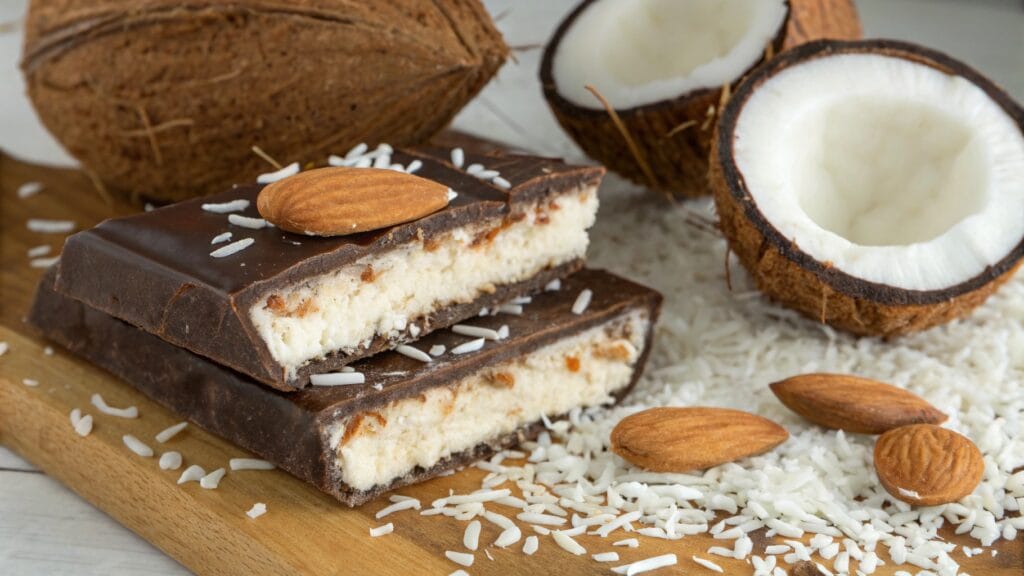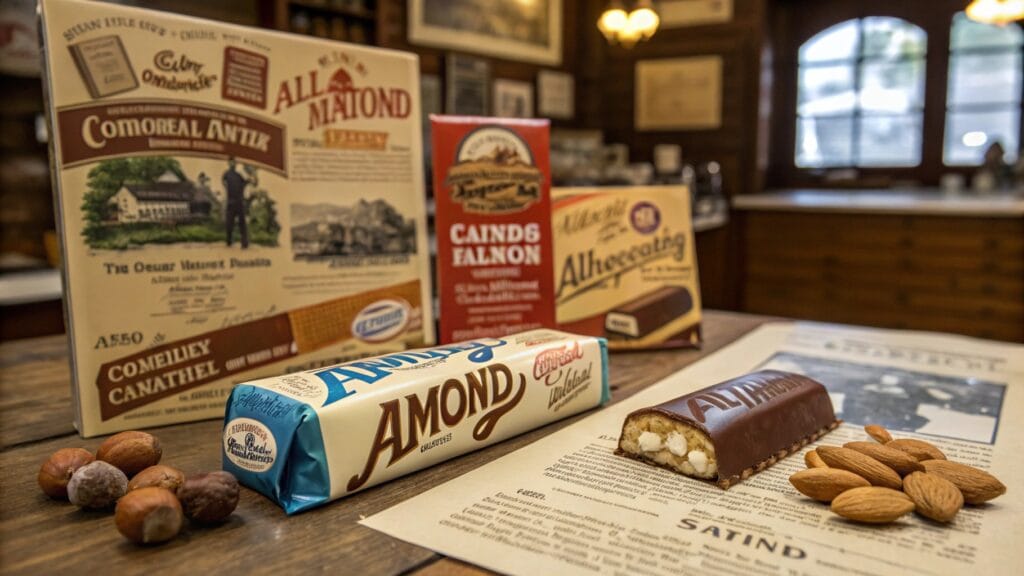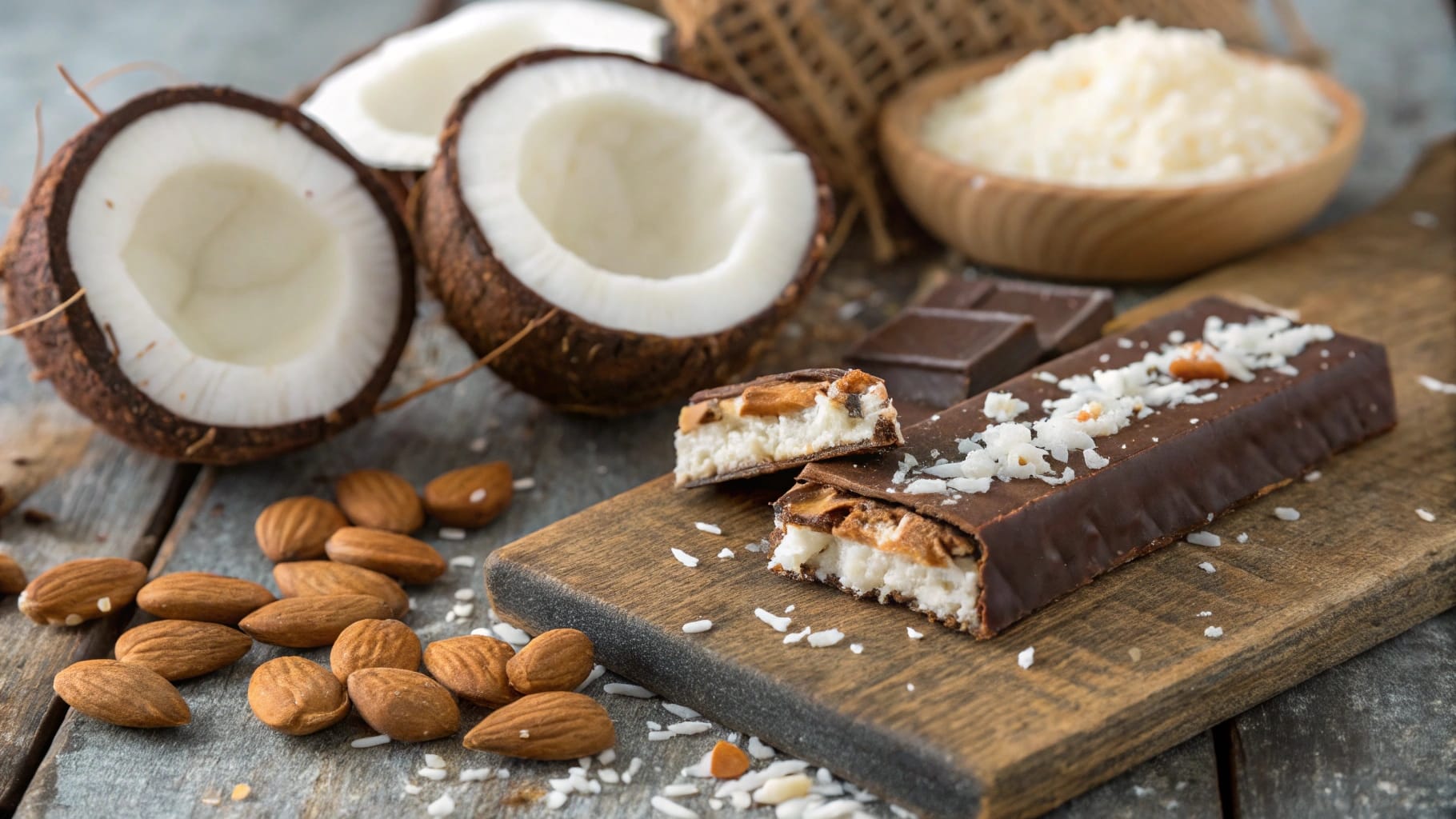Does Almond Joy Contain Real Coconut?
If you’re a fan of Almond Joy, you’ve probably wondered at some point: Does Almond Joy contain real coconut? This sweet treat, known for its distinct layers of coconut, almond, and chocolate, has undergone significant changes over the years. In this article, we’ll take a closer look at the origins of Almond Joy, its ingredients, and how it compares to modern alternatives. Whether you’re a die-hard fan or just curious about what you’re eating, we’ve got you covered.
Table of contents
- Does Almond Joy Contain Real Coconut?
- The Origins and Evolution of Almond Joy
- Examining the Coconut in Almond Joy
- How Almond Joy Ingredients Compare to Competitors
- Regulations and Controversies Surrounding Ingredients
- Why Coconut Fans Love Almond Joy
- FAQs: Answering Popular Questions About Almond Joy
- Conclusion: Is Almond Joy Still a Sweet Classic?
The Origins and Evolution of Almond Joy
The Early Days of Almond Joy
Almond Joy dates back to 1946 when it was introduced by Peter Paul Candy Manufacturing Company. Originally marketed as a luxurious indulgence, its simple ingredients and hand-crafted feel made it a favorite. Back then, Almond Joy was known for its tagline, “Indescribably Delicious,” emphasizing its rich coconut and chocolate flavor.
Fast forward to today, Almond Joy’s recipe has changed significantly. No longer made by Peter Paul, the candy bar is now owned by The Hershey Company. With ownership came changes in ingredient sourcing, formulation, and manufacturing processes, raising questions about the authenticity of its coconut filling.
Transition to Hershey’s Ownership
Hershey acquired the Peter Paul brand in 1988, bringing Almond Joy under its vast portfolio of confectioneries. This transition introduced a more industrialized approach to production, including the use of high-fructose corn syrup and other additives. Over time, these changes led to a shift in how consumers perceive Almond Joy.
Where once almonds were a primary ingredient, they now rank lower on the list. The recipe’s evolution reflects broader trends in the candy industry, prioritizing cost-effectiveness over simplicity.
Ingredient Changes Over Time
Today’s Almond Joy contains a blend of shredded coconut, sugar, corn syrup, and chocolate coating. However, it’s the quality of the coconut that often comes under scrutiny. The processing methods used to create the coconut filling may alter its natural flavor and texture.
Comparatively, other brands, such as OCHO and UNREAL, emphasize organic and minimally processed ingredients, leaving some to wonder: is Almond Joy keeping up with the times?
Examining the Coconut in Almond Joy
Is the Coconut Real or Artificial?
One of the most common questions about this candy bar is, “Does Almond Joy contain real coconut?” The short answer is yes—Almond Joy uses real coconut in its filling. However, the story doesn’t end there. The shredded coconut in Almond Joy is heavily processed, mixed with sugar, and combined with other ingredients to maintain texture and sweetness. This processing can strip the coconut of some of its natural qualities, like the rich, nutty flavor and fibrous texture.
Moreover, unlike some organic alternatives, Almond Joy’s coconut isn’t certified organic or sustainably sourced. Brands like OCHO and Theo emphasize fair trade and minimal processing for their coconut, which appeals to health-conscious consumers.
Comparison to Homemade or Organic Alternatives
When you bite into an Almond Joy, it’s clear the coconut filling doesn’t taste quite like the fresh coconut you’d find in homemade desserts. That’s because the candy uses preservatives and sweeteners to enhance its shelf life and sweetness. Organic alternatives, such as UNREAL Coconut Bars, focus on preserving the natural flavor of coconut by using fewer additives.
So, while Almond Joy technically contains real coconut, it’s far from the fresh, unprocessed version found in nature. For those seeking a more authentic experience, handmade or organic treats may be a better fit.
The Impact of Processing on Coconut Quality
Processing coconut affects more than just its taste—it also reduces its nutritional value. Fresh coconut offers healthy fats and fiber, but Almond Joy’s processed version turns it into a sugary treat. While it satisfies a sweet tooth, it provides less nutrition compared to the minimally processed coconut used in healthier alternatives.
How Almond Joy Ingredients Compare to Competitors
Ingredient Analysis of Almond Joy vs. OCHO Coconut
When comparing Almond Joy to brands like OCHO Coconut, key differences in ingredients become evident. While Almond Joy relies on additives like high-fructose corn syrup, OCHO boasts organic and fair-trade certified coconut fillings. This distinction makes OCHO a preferred choice for consumers prioritizing clean, wholesome ingredients.
The use of artificial flavors and preservatives in Almond Joy contrasts sharply with the more natural approach taken by its competitors. Although both brands offer delicious coconut-based treats, ingredient transparency plays a big role in consumer trust.
Vegan and Organic Alternatives in the Market
With the rise of vegan and organic lifestyles, Almond Joy faces stiff competition. Products like UNREAL and Theo Coconut Bars cater to health-conscious shoppers by avoiding animal products and using sustainable ingredients. These options offer a purer coconut taste and often feature certifications like Non-GMO Project Verified or Fair Trade Certified.
For those asking, “Does Almond Joy contain real coconut?” the answer might be satisfactory, but it’s clear that alternatives provide a more natural and ethical option for coconut lovers.
Consumer Perceptions of Coconut-Based Candy Bars
Consumers are becoming more aware of what’s in their food, and this shift impacts their buying habits. Many prefer brands that are upfront about their ingredients and focus on sustainability. While Almond Joy remains a nostalgic favorite, its processed ingredients and lack of transparency may deter those looking for healthier, cleaner treats.

Regulations and Controversies Surrounding Ingredients
Ingredients Banned at Whole Foods
Almond Joy’s use of ingredients like high-fructose corn syrup and artificial additives sparks controversy. Whole Foods Market flags these components as “unacceptable in food,” prompting some consumers to question the candy bar’s quality and safety. Whole Foods enforces strict ingredient standards, excluding artificial colors, flavors, and certain sweeteners, which places Almond Joy on its no-sell list.
For those asking, “Does Almond Joy contain real coconut?” the answer is yes, but heavily processed additives overshadow its realness. Health-conscious shoppers increasingly favor alternatives like OCHO and Theo Coconut Bars, which avoid these banned substances.
Health Implications of Corn Syrup and Other Additives
High-fructose corn syrup, a common sweetener in Almond Joy, links to various health concerns, including obesity and metabolic disorders. Additionally, manufacturers use preservatives and emulsifiers like PGPR (Polyglycerol Polyricinoleate), which raise eyebrows. These additives improve shelf stability and texture, but they don’t appeal to those who prefer cleaner eating.
It’s worth noting that while Almond Joy is undeniably delicious, it’s far from a “healthy” snack. Consumers seeking better-for-you alternatives often gravitate toward organic or minimally processed options.
Public Reactions and Consumer Advocacy
Public sentiment about Almond Joy reflects a growing awareness of ingredient quality. Many long-time fans express nostalgia for the simpler recipe of the past, lamenting the shift toward a more industrialized product. Advocacy groups and food bloggers regularly highlight concerns about processed ingredients, pushing brands like Hershey to consider reformulating their recipes.
Why Coconut Fans Love Almond Joy
Coconut’s Role in Taste and Texture
One thing that hasn’t changed over the years is the coconut filling’s ability to deliver a sweet, chewy texture that complements the chocolate and almond layers. While some purists argue that the processing diminishes the coconut’s natural flavor, others appreciate the candy bar’s signature blend of ingredients.
For many fans, the answer to “Does Almond Joy contain real coconut?” is a resounding yes, and it’s the coconut that keeps them coming back for more. However, the processed nature of the coconut filling leaves some wishing for a more authentic experience.
Nostalgia vs. Modern Preferences
Almond Joy holds a special place in the hearts of many, thanks to its long history and nostalgic advertising campaigns. However, modern consumers are more discerning than ever, prioritizing ingredient transparency and sustainability. This shift explains the growing popularity of brands like UNREAL and Theo, which deliver on both taste and ethics.
While nostalgia keeps Almond Joy relevant, its inability to meet the demands of the modern marketplace may push it further into the realm of guilty pleasures rather than go-to snacks.
For a creative twist on the Almond Joy experience, check out Kamala Recipes’ Easy 4-Ingredient Almond Joy Cookies Recipe for a homemade take on this classic treat.
FAQs: Answering Popular Questions About Almond Joy
Is the coconut in Almond Joy real?
Yes, Almond Joy uses real coconut, but manufacturers process it heavily. They combine shredded coconut with sugar, preservatives, and other ingredients to produce the sweet, chewy filling. While technically “real,” the processing diminishes some of the natural flavor and texture found in fresh coconut.
What is Almond Joy made of?
Almond Joy consists of sweetened shredded coconut, a layer of chocolate coating, and a whole almond on top. The ingredient list also includes processed components like high-fructose corn syrup, artificial flavors, and emulsifiers, which help achieve its signature taste and texture.
Are Almond Joys the healthiest candy?
No, Almond Joys don’t qualify as the healthiest candy. They contain almonds and real coconut, but their high sugar content, processed ingredients, and additives like high-fructose corn syrup turn them into an indulgent treat rather than a healthy snack. If you prefer healthier options, check out brands like UNREAL and OCHO, which create similar coconut-based treats with cleaner, organic ingredients.
Do Mounds have coconut?
Yes, Mounds also use coconut as the primary filling. However, unlike Almond Joy, Mounds skip the almonds and feature a dark chocolate coating instead of milk chocolate. Manufacturers process and sweeten the coconut filling in Mounds to create its characteristic taste.
more detailed breakdown, you can explore the ingredients in-depth in Kamala Recipes’ Almond Joy Ingredient Guide.
Conclusion: Is Almond Joy Still a Sweet Classic?
While there’s no denying the nostalgic appeal of Almond Joy, modern consumers are asking more questions than ever about what’s in their food. The recurring query, “Does Almond Joy contain real coconut?”, highlights the growing demand for transparency and quality in snack foods.
Almond Joy remains a popular candy bar, but its processed ingredients and reliance on additives leave room for healthier competitors to thrive. For coconut lovers, the candy’s unique flavor profile continues to satisfy, though some may prefer alternatives that focus on organic and sustainable ingredients.
If you’ve ever wanted to recreate Almond Joy’s coconut-filled magic at home, don’t miss Kamala Recipes’ Easy Almond Joy Cookies for a fun and simple twist on this timeless treat.


